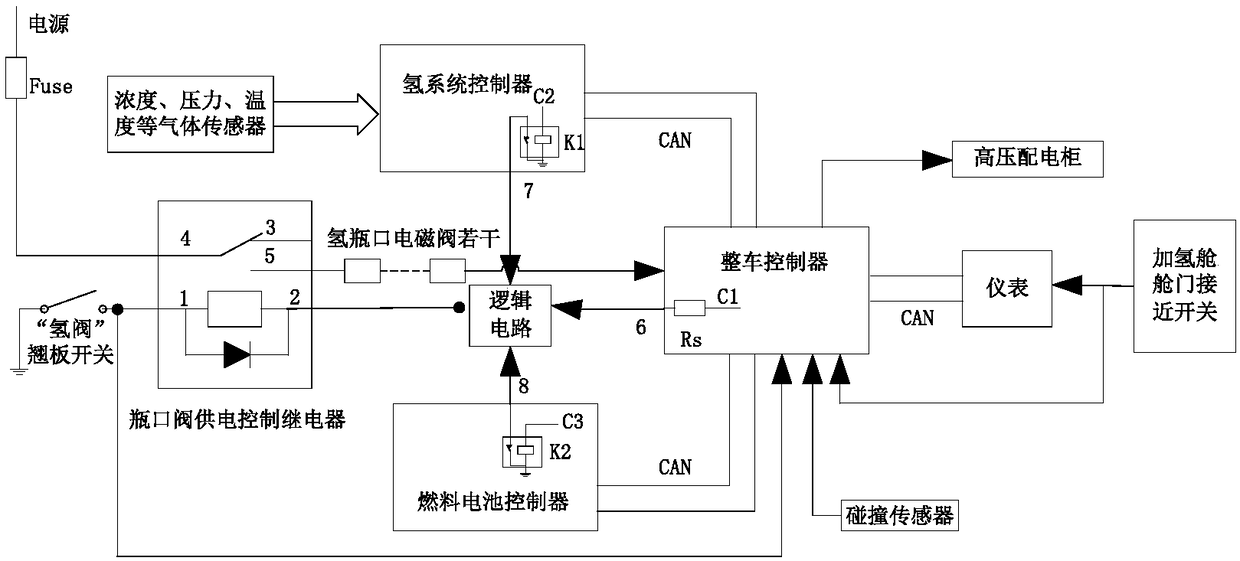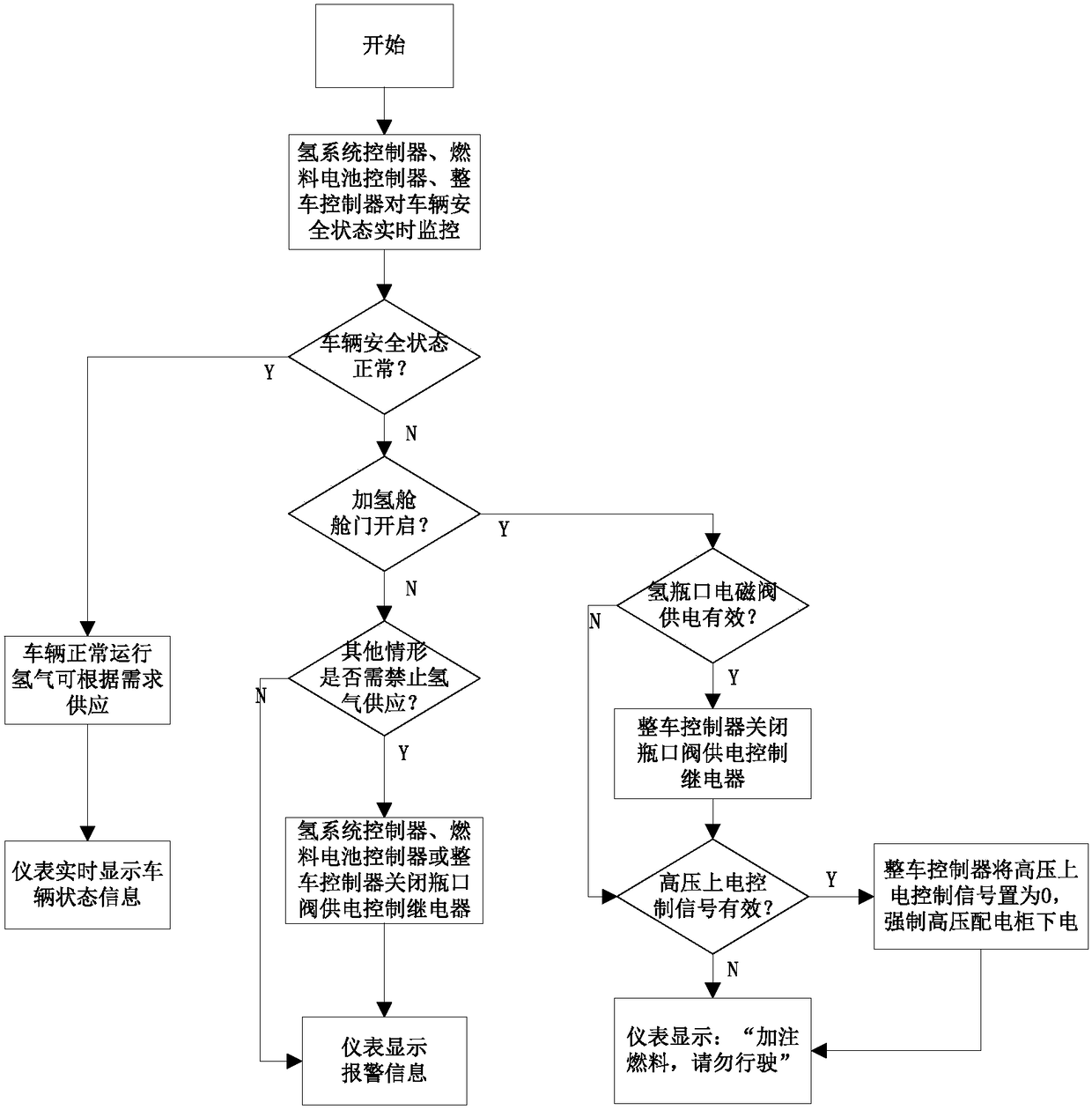Hydrogen safety control method and system for hydrogen fuel cell bus
A fuel cell and safety control technology, which is applied in the direction of fuel cell additives, the arrangement combined with the fuel supply of internal combustion engines, vehicle components, etc., can solve the problem of low active safety and achieve the effect of strengthening active safety
- Summary
- Abstract
- Description
- Claims
- Application Information
AI Technical Summary
Problems solved by technology
Method used
Image
Examples
Embodiment Construction
[0025] The specific implementation manner of the present invention will be described in further detail below in conjunction with the accompanying drawings.
[0026] A hydrogen safety control system for a hydrogen fuel cell bus of the present invention such as figure 1 Shown:
[0027] The hydrogen system controller, fuel cell controller, and vehicle controller simultaneously monitor the safety status of the vehicle in real time; moreover, the hydrogen system controller, fuel cell controller, vehicle controller and instruments communicate through the CAN network. Among them, the hydrogen system controller is connected with the concentration, pressure, and temperature sensors, and mainly monitors the bottle mouth temperature and pressure of the hydrogen storage bottle and the hydrogen concentration in the area that is likely to cause hydrogen leakage; the vehicle controller is connected with the output of the collision sensor through a hard line, The status signal of the proximi...
PUM
 Login to View More
Login to View More Abstract
Description
Claims
Application Information
 Login to View More
Login to View More - R&D
- Intellectual Property
- Life Sciences
- Materials
- Tech Scout
- Unparalleled Data Quality
- Higher Quality Content
- 60% Fewer Hallucinations
Browse by: Latest US Patents, China's latest patents, Technical Efficacy Thesaurus, Application Domain, Technology Topic, Popular Technical Reports.
© 2025 PatSnap. All rights reserved.Legal|Privacy policy|Modern Slavery Act Transparency Statement|Sitemap|About US| Contact US: help@patsnap.com


